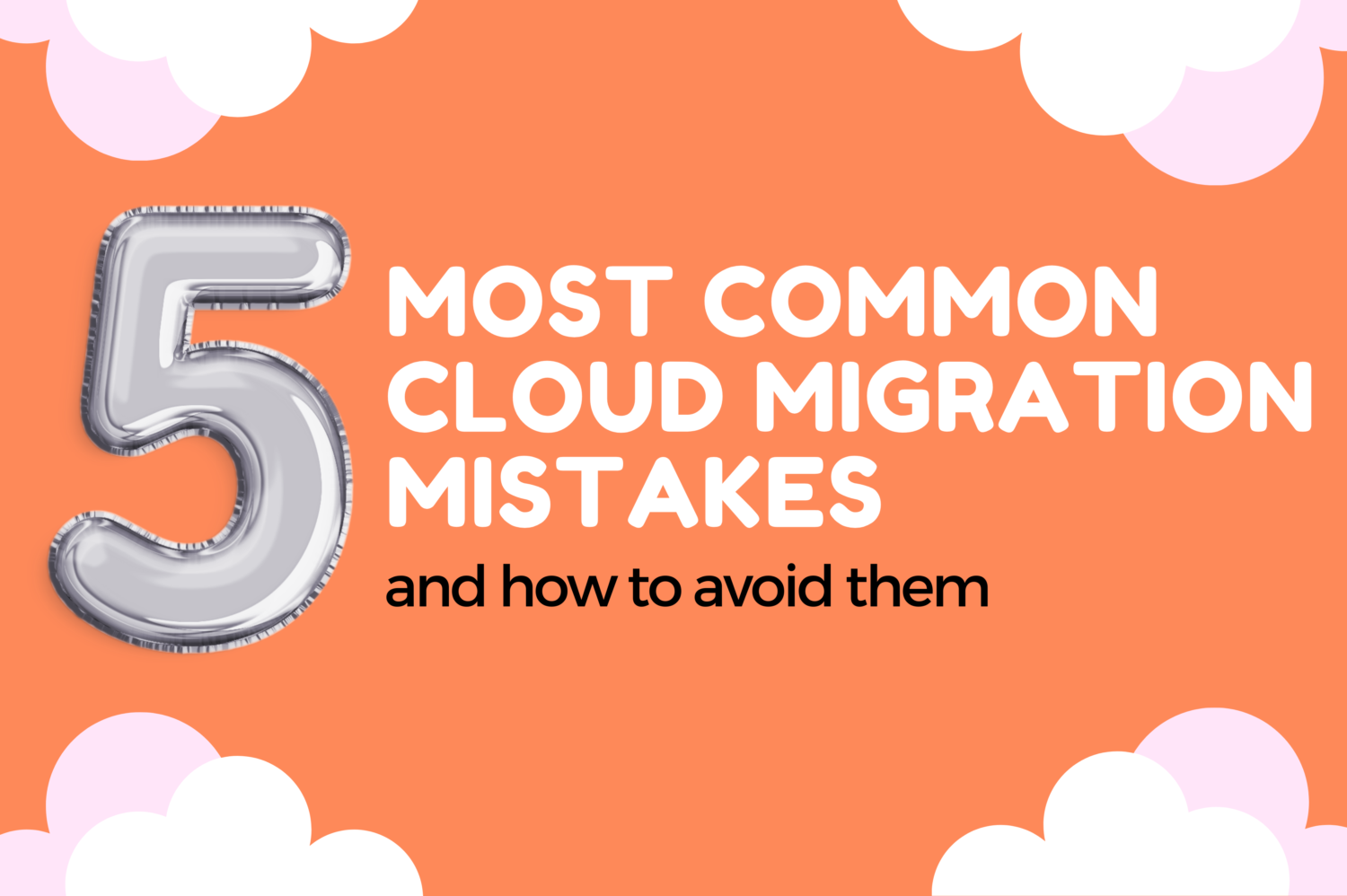Cloud Migration most common mistakes and how to avoid them
Are you considering migrating to the Cloud?
Cloud migration can be a tricky process, and companies often make costly mistakes in the rush to move to the cloud. Cloud cost optimization is essential to avoid wasting money on your cloud migration project. In this blog post, we’ll take a look at some of the most common mistakes companies make when migrating to the cloud, and how you can avoid them.
Some of the most common cloud cost mistakes include:
- Ignoring cost management during the migration process
- Lack of visibility into usage patterns and resource optimization
- Underestimating data storage needs and overspending on storage
- Not taking advantage of discounts or reserved instances offered by cloud providers
- Not leveraging multiple clouds or alternative service options
Let’s take a look at each one of these!
1. Ignoring cost management during the migration process
Cloud migration involves many different steps and services, and it is crucial to keep track of the costs at each phase of the process.
One of the biggest challenges when migrating to the Cloud is effective cost management which can lead to higher bills than expected. Many companies overlook the importance of being on top of their spending in every stage but in order to ensure the success of your Cloud migration process, careful planning and Cloud Cost Optimization (CCO) are key.
There are 4 main principles for CCO:
- Cost Visibility
- Resource usage optimization
- Price efficiency
- Cost planning
To ensure that costs are kept in check during the migration process, it’s important to set a clear budget from the outset and establish a strategy for tracking and managing costs. Cloud analytics can be used to monitor usage patterns and identify areas where cost optimization is possible. Additionally, companies should evaluate their cloud services regularly to ensure they are getting the best value for their money.
2. Lack of visibility into usage patterns and resource optimization
Understanding how cloud infrastructure is used on a daily basis is very important in order to make better decisions. Thankfully, there are many tools available to help you visualize and understand your usage patterns.
Cloud analytics can provide insights into usage patterns, enabling companies to better understand their utilization of resources and identify opportunities for optimization. Some cloud providers even offer basic analytics free of charge.
Cloud dashboards are useful as they offer deeper visibility into performance data and overall resource consumption.
Not optimizing resources can result in higher costs than budgeted. Tools like auto-scaling and right-sizing can help you prevent this. Also billing alarms are helpful to be aware of the upcoming monthly costs and detect an unplanned increase early.
Cloud automation can be used to automate certain processes that are prone to cost overruns, such as spin up and spin down of resources or scaling of services. There should always be reasonable limits set as an extra safeguard.
Automation helps ensure efficient use of cloud resources and reduce the risk of unexpected cost spikes.
3. Underestimating data storage needs and overspending on storage services.
Cloud storage costs can add up quickly, and companies should be aware of the potential for overspending on Cloud Storage.
This usually happens when a proper analysis to clearly estimate how much data is generated or stored is not made beforehand and companies purchase more than they actually need. Most cloud providers allow dynamically resizing the block storage devices and thus there is no need to pre-provision terabytes of storage in advance.
Cloud analytics can help organizations identify areas where data storage needs are not being met, enabling them to adjust their storage usage accordingly following right-sizing principles.
Although cloud storage can be affordable, you can end up wasting money if you create oversized block devices and shares.
4. Not taking advantage of discounts or reserved instances offered by cloud providers
Cloud vendors often offer discounts and reserved instances that can help reduce overall costs.
There are several tools that can be used to identify where these savings opportunities exist, enabling companies to take advantage of them and reduce Cloud costs. You can check our article about AutoSpotting to learn more about how to save up to 80-90% on your cloud compute instances.
Taking advantage of these discounts is a great opportunity for cost savings and improved performance that you don’t want to miss. Also, make sure to connect cloud provider accounts under one organization for consolidated billing to receive better volume discounts.

5. Not leveraging multiple clouds or alternative service options
Organizations that migrate to the Cloud should also consider leveraging multiple clouds or alternative services when possible. Spreading Cloud usage across multiple providers or switching to more affordable Cloud services when necessary can help with cost reduction.
For example, one of the advantages of adopting a multi-cloud strategy is that you can compare the cost & performance factors across cloud service providers and then opt for the most relevant service. Some providers charge a lot for traffic, while some others have very expensive GPU instances. Finding the right provider and service for a certain use-case can easily save up to 30-50% of the costs.
By leveraging multiple clouds or alternative service options, companies can take advantage of Cloud cost savings opportunities and ensure Cloud usage efficiency.
Conclusion
Cloud Cost Optimization is an essential step in the Cloud migration process that shouldn’t be overlooked or postponed. With the right strategy in place, organizations can save money while ensuring Cloud usage efficiency.
Cloud analytics, automation and resource tagging are basic Cloud Cost Optimization strategies that can help companies save money while ensuring efficient use of Cloud resources. You can check our post about CCO to learn the best practices and strategies that will help your organization to keep their Cloud costs in check.
By avoiding these common mistakes and applying the right Cloud Cost Optimization strategy, you can have a successful Cloud migration that will make the most of your transition while avoiding unnecessary waste of resources.
Need help finding the right CCO strategy or reducing the Cloud bill? Give us a call today!

